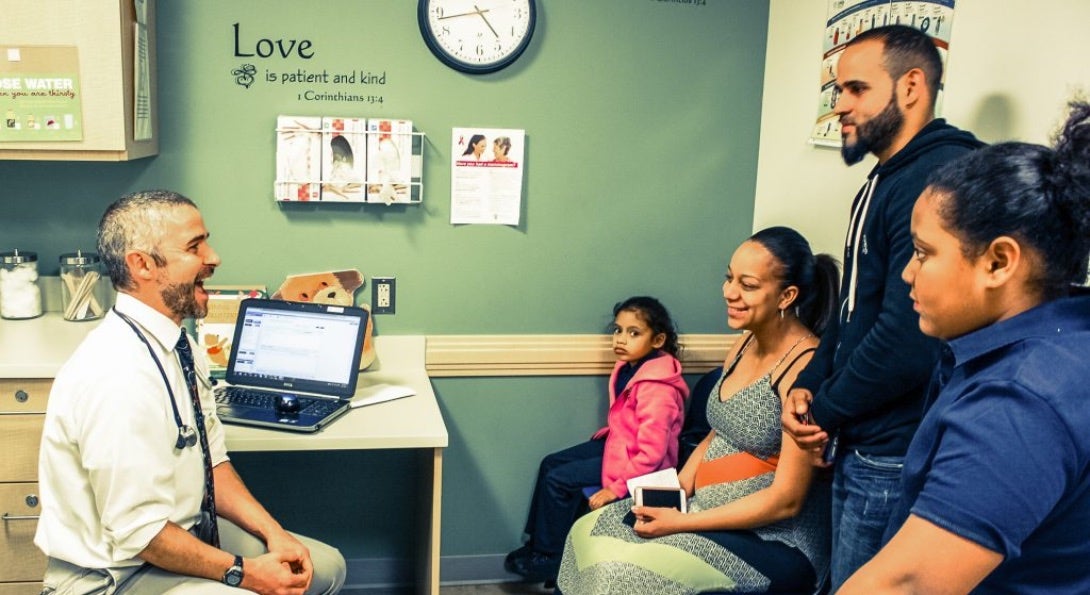Medically underserved area designations missing low-income Chicagoans

Story text Heading link
Safety net programs are, by design, located in underserved areas to provide necessary services for those who lack access to resources. Yet the distribution of medically underserved area (MUA) designations in Chicago does not always follow trends in need.
New research in the journal Health Equity details how the likelihood of MUA designation in Chicago across census tract areas increases as rates of poverty increase, but at a tipping point, the likelihood of MUA designation declines even as rates of poverty increase in census tract areas. At the same time, areas with greater proportion of Black residents experienced a similar tipping point.
“Communities have to actually get together and apply for this designation, so it does require a certain level of social capital,” said Sage Kim, PhD, associate professor of health policy and administration and the corresponding author of the study. “When poverty goes up beyond a tipping point, most of these communities do not have that level of social capital.”
MUAs are geographic areas designated as lacking access to primary care services and are eligible for enhanced reimbursement from Medicare and Medicaid for primary care services through Federally Qualified Health Centers (FQHCs). The federal Health Resource and Services Administration evaluates and designates MUAs based on an Index of Medical Underservice (IMU). MUAs can encompass areas as small as a census tract or as large as groups of neighboring counties.
SPH researchers analyzed the spatial distribution of MUA designation and FQHCs in Chicago neighborhoods with IMU scores qualifying for designation. Their results found census tracts eligible and designated as MUAs were clustered on the far north and west sides of Chicago. The 87 tracts eligible but not designated as MUAs were predominantly on the south side of the city.
Populations in tracts with MUA designation were about 40 percent Black, compared to more than 92 percent in non-designated eligible tracts. The non-designated tracts encompassed populations with poverty rates more than three percentage points higher, on average, than the designated tracts. The FQHC rate differed significantly: about 41 per 100,000 low-income residents in the MUA tracts, and 15.5 per 100,000 in the non-MUA tracts.
“It’s not just the relationship between poverty and the likelihood of MUAs is not linear,” Kim said. “The most extreme poverty areas turn out to be minority communities.”
The next step quantified concentrated disadvantage widely used to measure the effects of neighborhood context on disparities. This index accounts for levels of poverty and proportions of the population which are Black, have completed education less than a high school diploma and female-headed households. Finally, the researchers evaluated social capital through measures of social interaction, civic engagement and economic potential.
This analysis found census tracts with MUA designations were more likely to be racially diverse, stable and hosting a higher number of community organizations per capita. After controlling for factors relating to social interaction, economic potential and civic engagement, neighborhoods with a lower proportion of Black residents were more likely to receive MUA designation.
The authors argue their findings suggest an ability to organize and lobby at the community level is key toward receiving MUA designation. At the same time, they note “there is very little merit for the MUA designation process to be dependent on the community ability to apply for the program.”
The findings confirm previous scholars’ arguments that the combined effects of poverty and segregation are more than the separate effects of poverty and racial segregation. The challenge, the authors note, is to recognize that nonrace-specific policy decisions can have racial implications. Further research is needed to explore political isolation and how neighborhood effects as the community level impact social capital.